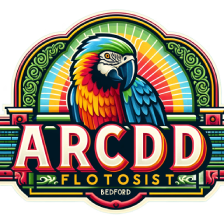Flat roofs are commonly used in every building, showing their credibility and importance in roofing. The flat roof contains different types with different materials and advantages. If you are considering getting a flat roof, you should know different types of flat roofs with their pros and cons to decide which to go for and which is suitable for your requirements.
Let’s dig deeper and find the necessary details about all the types of flat roofs here!
Different Types Of Flat Roofs
Flat roofs are of three different types containing different features. The types of flat roofs are made up of asphalt shingles, tpo roofs and other assisting materials. They are much more costly than traditional materials but also ensure quality and durability for a minimum of 25 years if installed well. Three types of flat roofs are;
- Rubber membrane roof
- Build up the roof
- Modified bitumen roof
Rubber membrane roof
It is a type of flat roof consisting of a single-ply membrane and acts as a thermoset, a water protector to protect the inside. It is made up of rubber, thermoset material, or PVC. This type of roofing is ideal for commercial buildings but is now commonly used in housing societies. It can be installed over the roof without damaging the primary layer of the roof. Some of its common types are;
- Cured elastomers
- Uncured elastomers
- Plastomers
- These types of rubber membrane roofs are accompanied by different types of materials possessing different chemical properties and are used for different purposes
Here are some pros and cons of this type of roof which you should consider before buying it;
Pros;
This type of roof is good to go for commercial buildings, but some advantages of rubber membrane roof will make you go wao;
- The rubber membrane roof is user-friendly and easy to install. You can install the single-ply membrane without getting any professional assistance. The membrane can easily be installed with the help of glue.
- The single-ply membrane is resistant enough to light to protect the roof’s primary layer from heat damage.
- The roof is water resistant and does not allow patchy shingles over the roof. If leaks are over the roof, the single-ply membrane protects the roof.
- The material is durable enough for 15 to 20 years if the ply membrane is perfectly installed.
- The roof does not allow any patches or leaks.
Cons
Every material has pros and cons, and so does the rubber membrane roof. Yes, let’s have a look.
- This type of roofing material costs much more than others.
- If the material is black, it would not be efficient for hot water as it absorbs the energy as much as possible.
- The light-colored material is not durable for winters as they reflect the heat, so you will need to spend more money on paints or abide by the specifications for certain weather, which is somewhat exhausting.
Build-up roof
This type of roofing is made up of certain materials, which are enough durable and energy efficient according to the weather. They are professionally installed over the roof and avoid leaks, and patches over the roof contribute to the roof’s life.
Pros
Here are some advantages of build-up roofs that distinguish them from other types;
- This roofing material is more durable and cheapest than any other type of roof.
Cons
If you are installing the roof yourself or taking help from an intermediary. You should know the cons of build-up roofs;
- The Build-up roof is very heavy and is not easy to install.
- You should need a professional for the installation process.
- Build-up roofs might overlook your roof’s beauty.
- Even in cold weather, the roofs contain a stingy smell and are much worse in hot weather.
Modified bitumen roof
This roof is also considered the sub-type of a single-ply roof as it is a single-membrane roof made up of bitumen modified by asphalt lawyers and rubber material which is good heat resistant. There are two methods commonly used to join the pieces of this material. Torch down system and peal-stick system.
Pros
- It is easy to install by the peal-stick method.
- The price is normally what a commoner can afford.
- It is good heat resistant.
Cons
- The torch-down system is not easy to do and also risky.
- You will need professional help to install the roof with the touch-down system.
Conclusion
Flat roofs are introduced in the modern world to instill advanced features inside the house. Different types of flat roofs are mentioned in the post so you can find the good one for you. Hopefully, the information provided here will be helpful for you.

